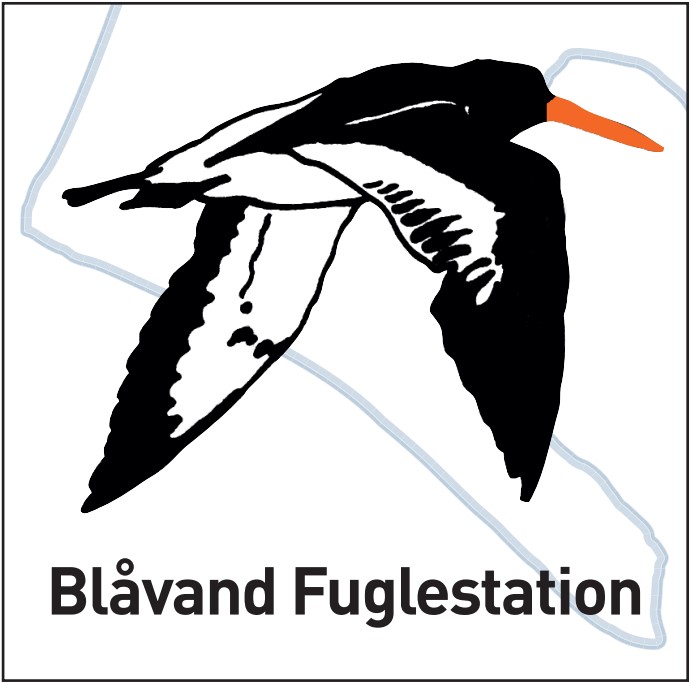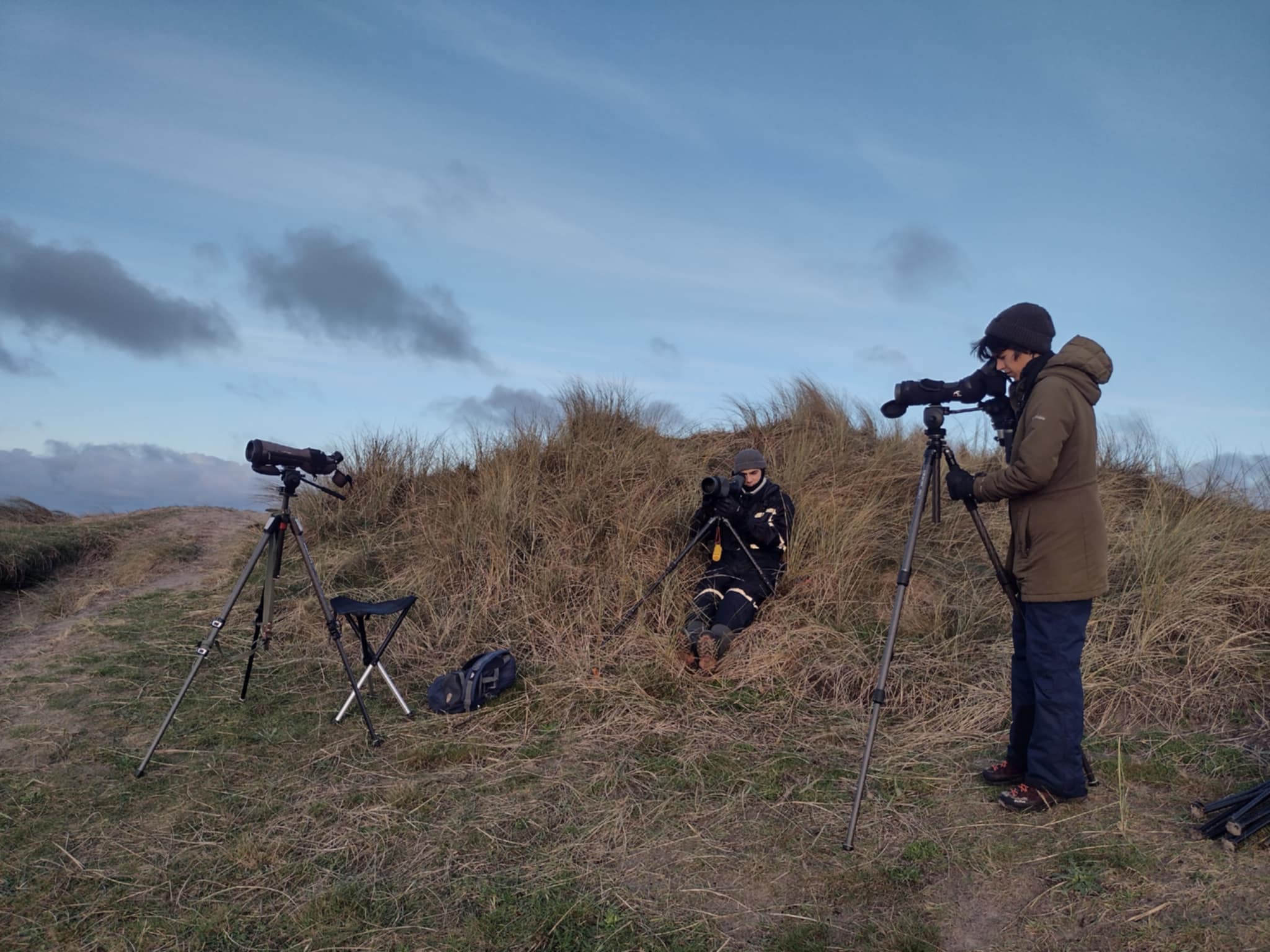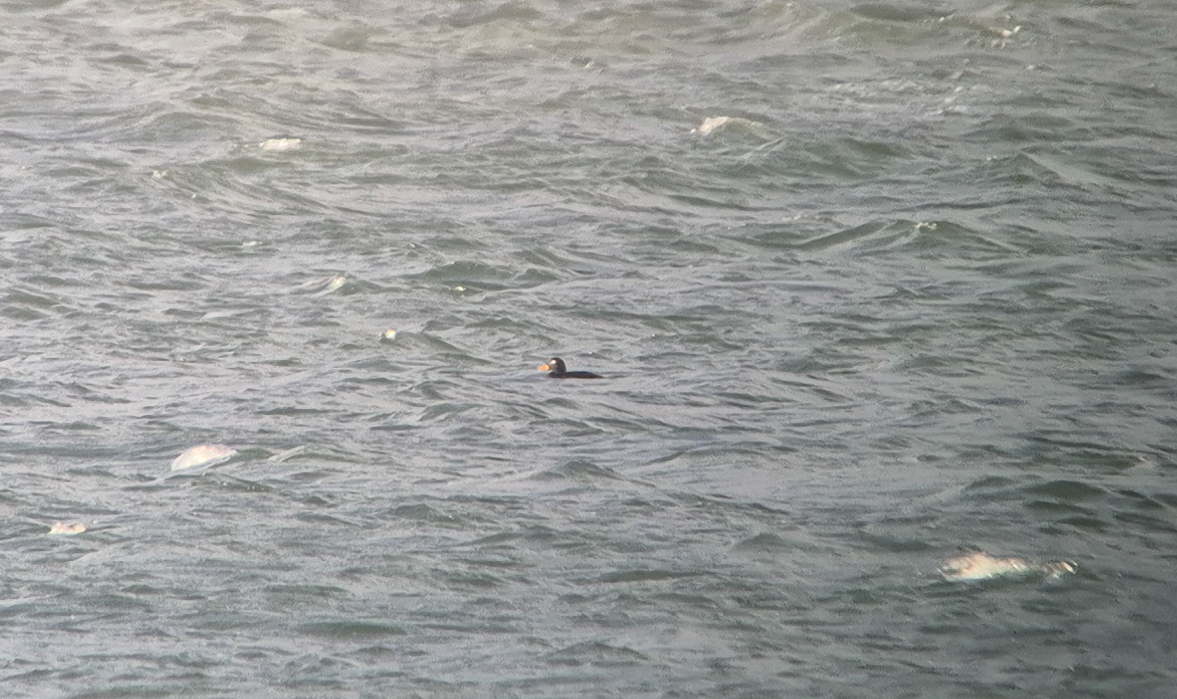Her på Blåvand's blog bringes korte nyheder i dagbogsformat om livet og hændelser på fuglestationen.
Good start with Short-toed Treecreeper and Glaucous Gull
The ringing:
Today was already a big improvement to yesterday. When I checked DMI in the morning, I saw, that we would have fog again in Blåvand from opening time the whole morning. When I looked out of the window, there was no fog at all. But I was prepared for it, it can get foggy very fast close to the sea. So it just improved my mood a lot, when the fog did not turn up, instead, a bright sun came up at sunrise. First round already brought more new birds than the whole day before, so I was happy. But the best of the morning was still about to come: It appeared in form of a Short-toed Treecreeper “Korttået Træløber”. If there is a Treecreeper with a kind of long Curlew bill in the net, you must be suspicious. Also the step in the wing bar was missing and the tips of the primaries where bright white while they are a little more off-white in the Eurasian Treecreeper. This is a nice species in hand, sometimes, they can soon get a bit tired but this one was very lively.
 Some pictures of the Short-toed Treecreeper “Korttået Træløber”
Some pictures of the Short-toed Treecreeper “Korttået Træløber”
Eight new birds in total and one recap, a nice Yellowhammer “Gulspurv,” were a big improvement to yesterday. Else, it was mainly adult male Blackbirds “Solsort” in the nets.

A bit later in the morning David and Jimmy went to the beach and spotted a Glaucous Gull “Gråmage”!
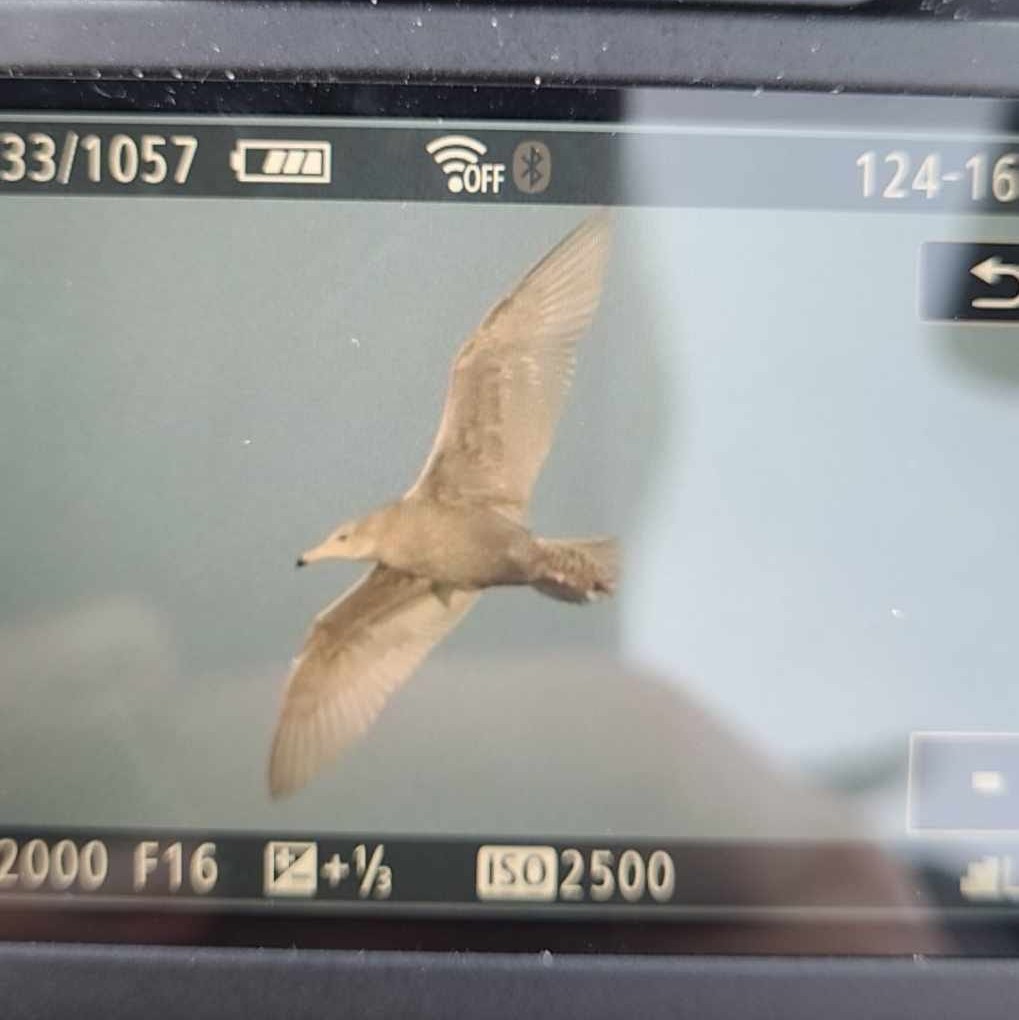
Glaucous Gull “Gråmage” by David Manstrup
Yesterday evening we had a new arrival at the station: We welcomed back Joseph for the whole spring season and summer, who had already been at the station in autumn 2023.
In the afternoon, Jimmy took Joseph and me to Grønningen. It was a really nice trip and a good variety of species for the time of the year. Great observations were a Hen Harrier “Blå Kærhøg” and lot of Pintails “Spidsand”, a very beautiful duck, I think. Tak for turen Jimmy!
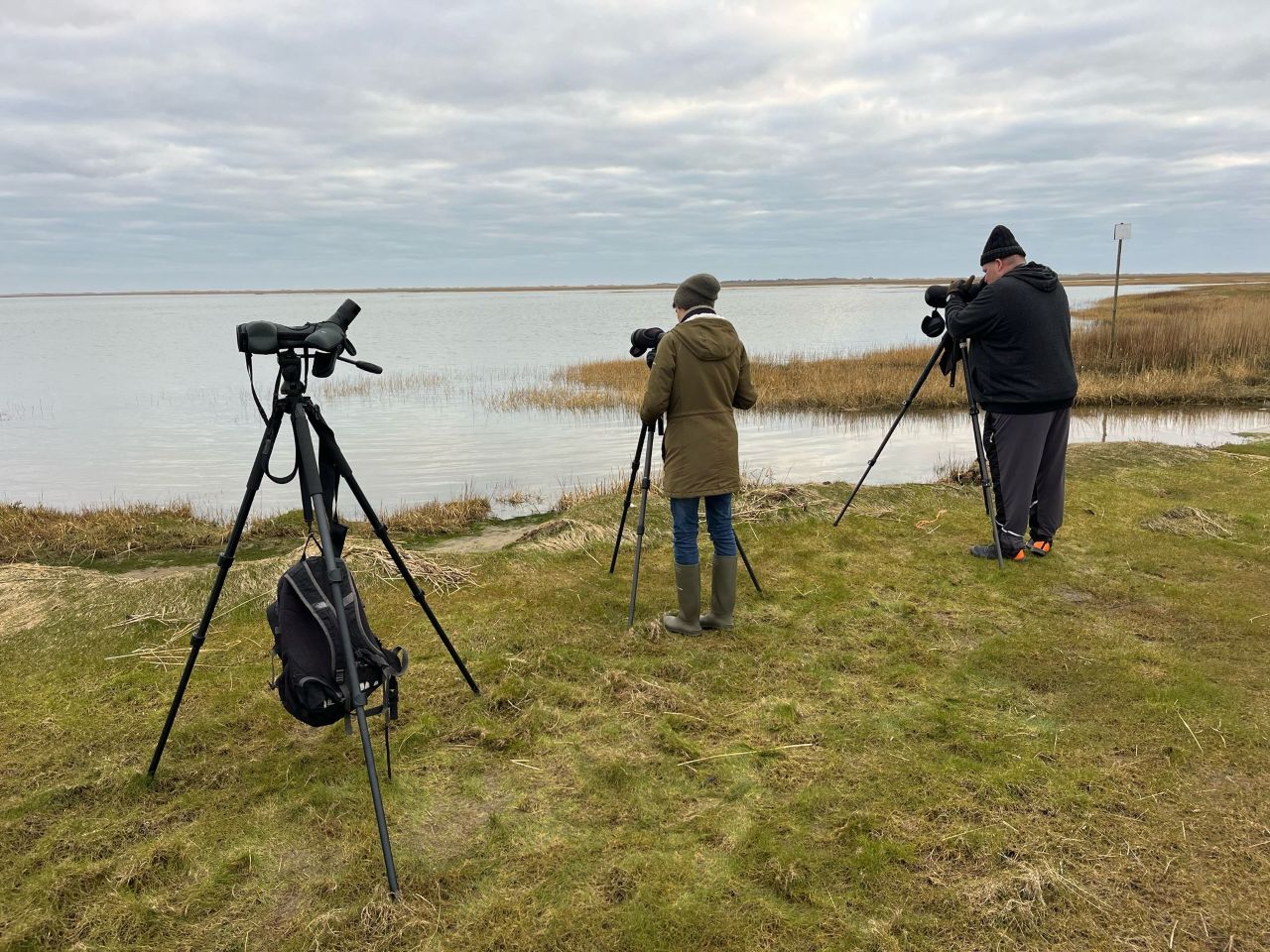
Birdwatching at Grønningen.
People: Joseph, David, Jimmy og Hanelie
The first standardized ringing day in 2025
The ringing:
This morning, the nets in both gardens were open half an hour before sunrise. The first round brought two new Blackbirds “Solsort” and a recapture of a Great Tit “Musvit”. It was again a very foggy morning. And nearly all the rest of the time of standardized ringing, I had zero rounds until I found a Wren “Gærdesmutte”, already with a ring, in a net in the lighthouse garden in the secound last round. But it can just improve.
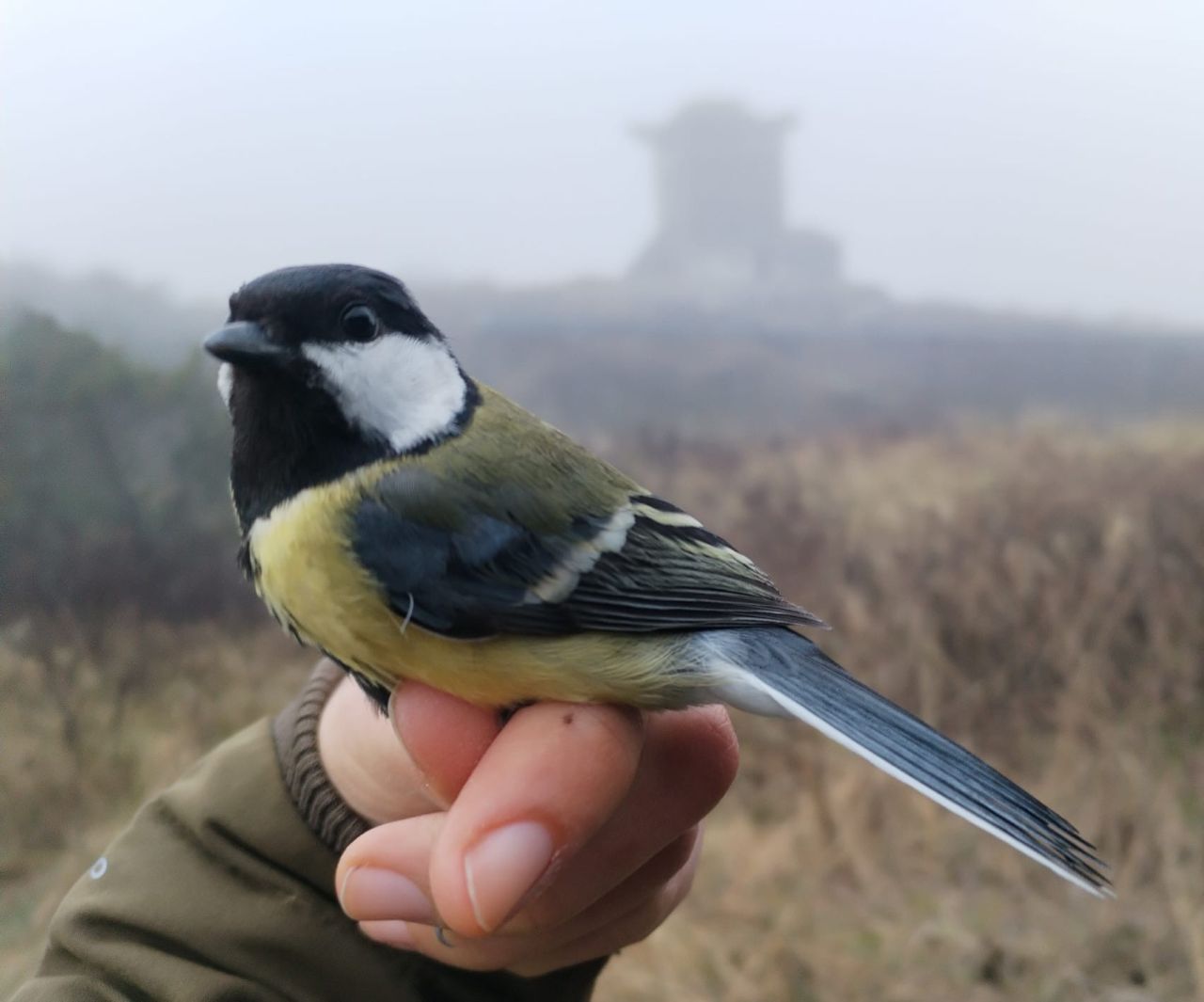
Great Tit "Musvit" on a foggy morning.

The moths:
Yesterday evening I could not believe DMI which showed the foggy morning that we had today. Because when I checked the moth trap in the evening, the night was star clear. I had two moths in the evening, again the Satellite “Satellitugle” and – a small and inconspicuous one, that was new for me: But to be safe, I will put it as slash secies, Agnopterix heracliana/ciliella, probably heracliana, but these are very similar species.

Agnopterix heracliana/ ciliella.
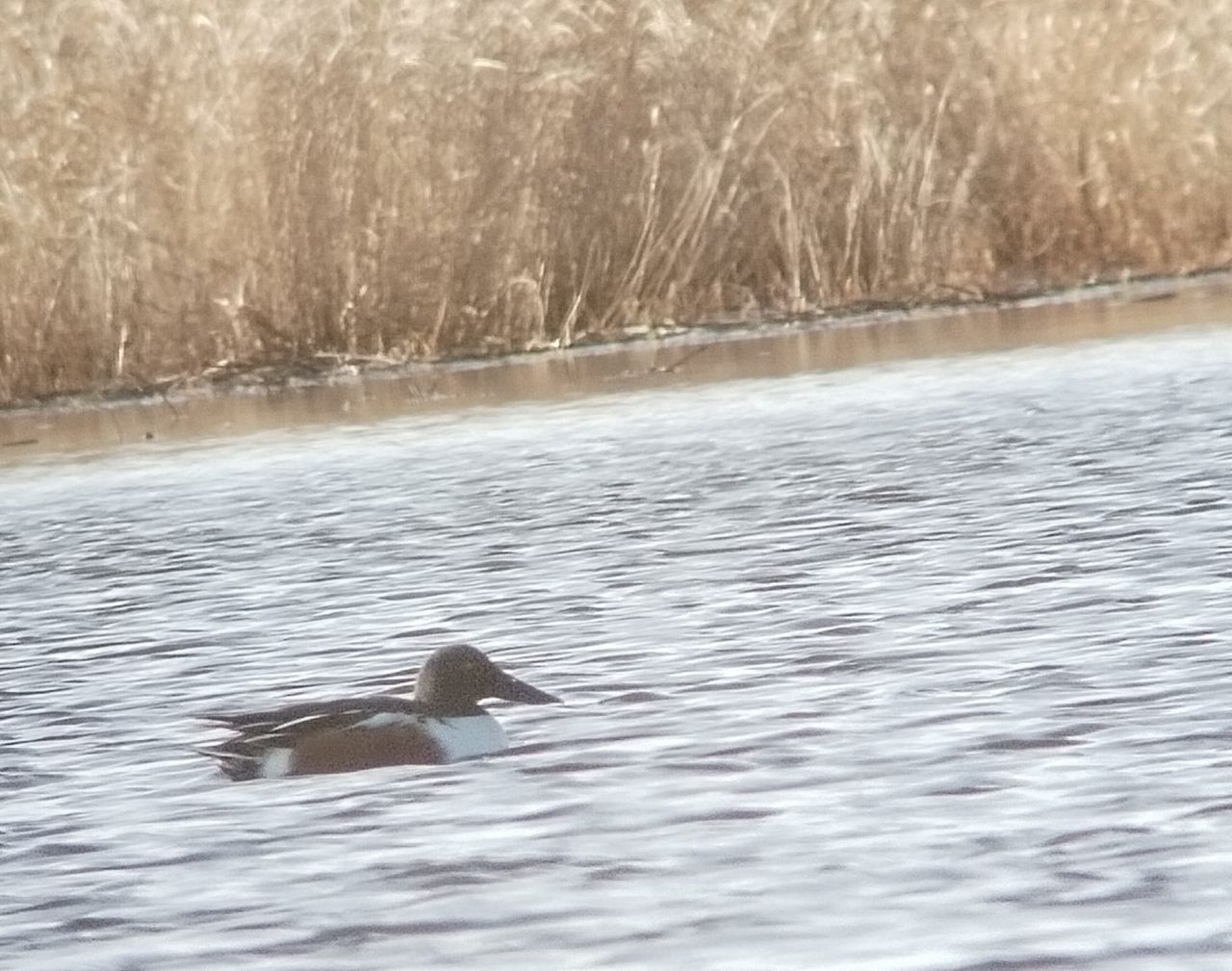
In the afternoon I went to a lake in the military area and saw two Shovelers "Skeand" with some other ducks.

Not dar from the lake, I saw that very white Buzzard "Musvage", a very beatiful one.
People: David, Hanelie, Jimmy and 2 guests
The first signs of spring
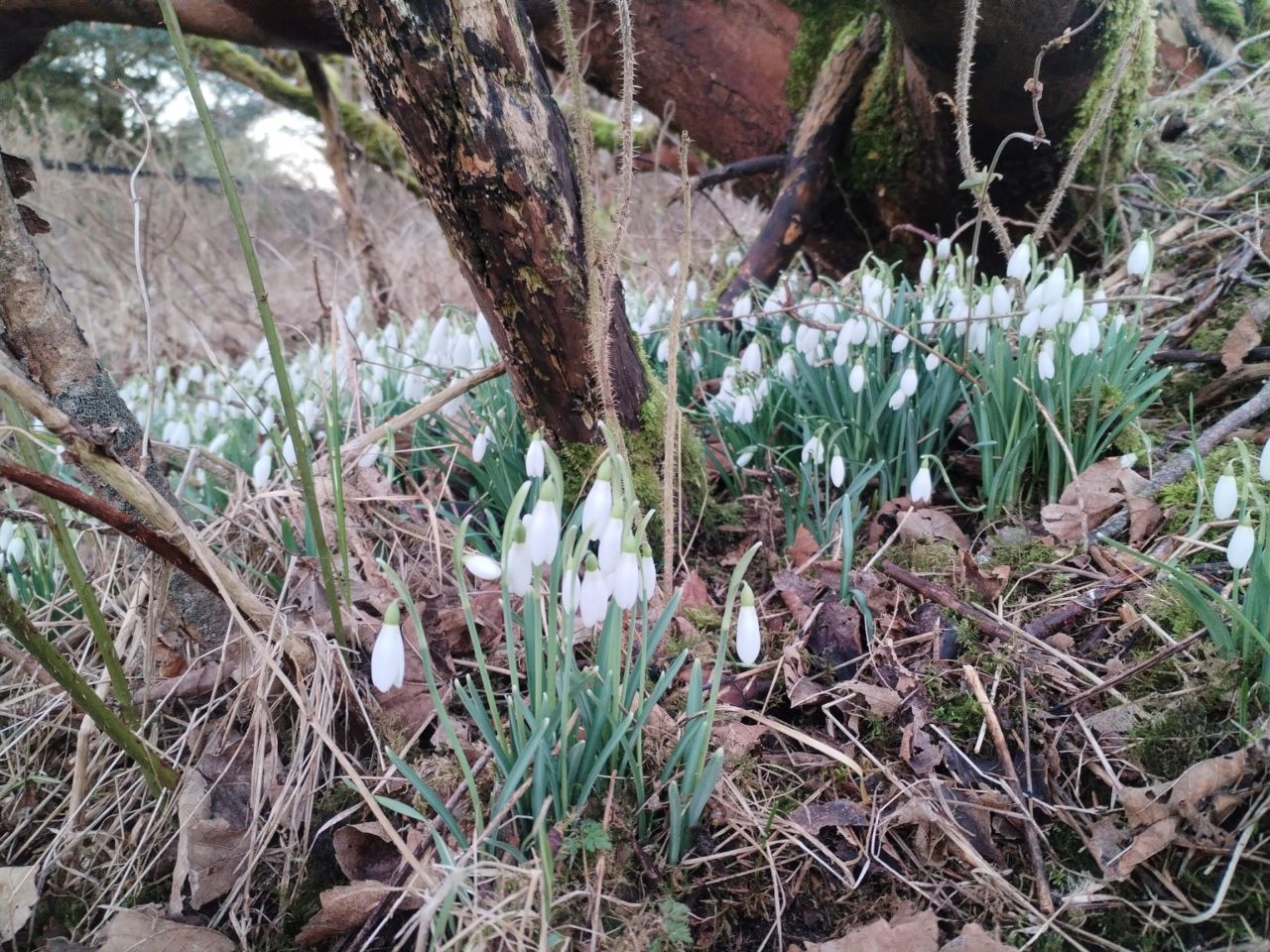
Even if not many spring birds were in the nets, an early spring greeting from the station garden: The common Snowdrop/ Vintergæk.
Yesterday did not happen so much, therefore as the season did not start yet, I decided to write a blog entry of yesterday and today. From tomorrow, the official start of the spring season, there will be a blog for every day!
I opened just the nets in the stations garden yesterday morning as the weather looked a bit unstable. It was the wrong decision, I realized soon. The weather was better than expected, but very loud work was being carried out on one of the neighboring houses quite soon after the nets were open. The noise made no bird come into the garden. With no birds, I closed the nets after some hours and went on a walk in the bog and on the beach. The Skylarks “Sanglærke” were more active than the day before and singing. On the beach I saw four Ringed Plovers “Stor Præstekrave”. I am always happy to see the first ones of the year.
Today, I woke up to have all nets in both gardens open half an hour before sunrise. It was not much that I caught, two birds got a new ring, a Chaffinch “Bogfinke” and a Dunnock “Jernspurv”. Else I had five recaptures, one Blackbird “Solsort” ringed in autumn 2019 by Lisa Flam as a 1K bird. This summer, it will be six years old! A Starling "Stær" had settled down on the top of the tree next to the ringing lab for a while and commented my mostly emty rounds with its calls and I also heared one in the lighthouse garden. Chaffinches "Bogfinke" and Yellowhammers "Gulspurv" are also alraedy singing in the morning.
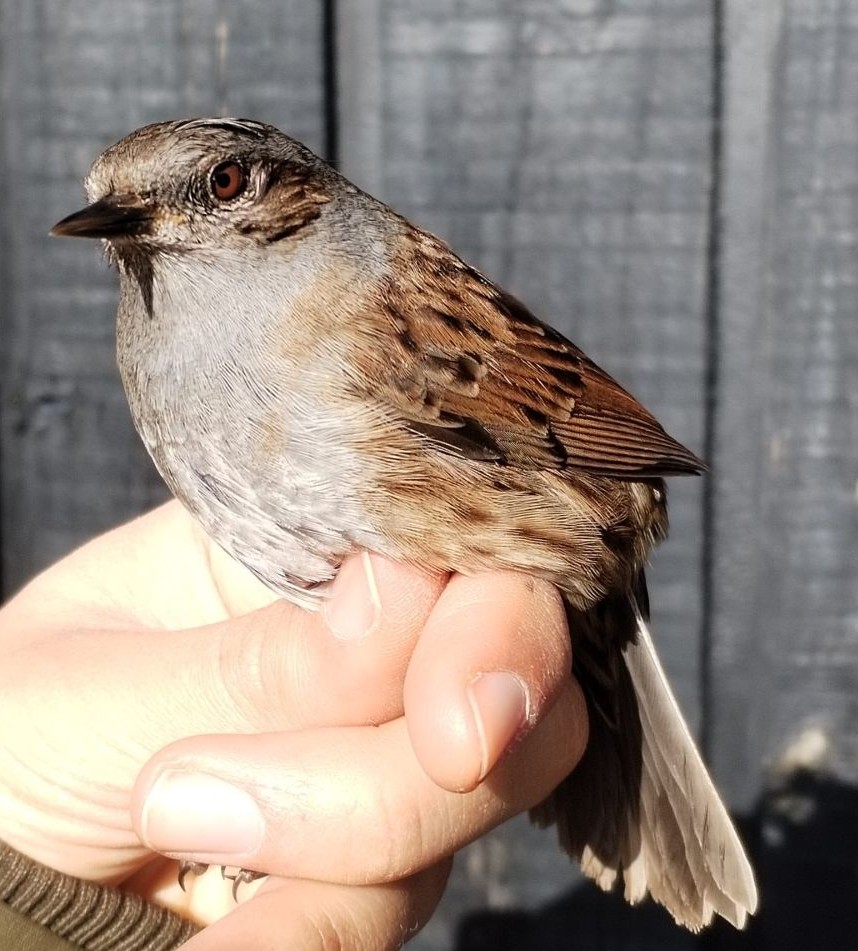
Dunnock/ Jernspurv
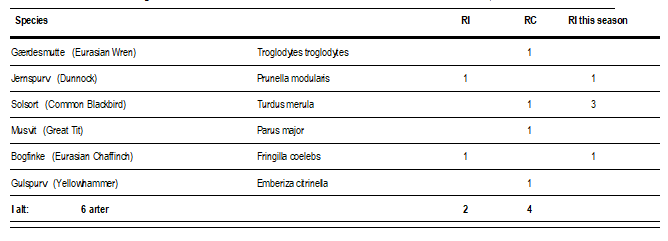
I also had the UV light on during the night and caught one moth, in english it is called the Satellite the same as in danish Satellitugle because of the two little white points on each side of the big one. It is a moth that overwinters as an adult, not as catarpillar, as many others. There are already moth species flying, that hatched from their pupa this year. I had one species in Germany and they have also been caught in Denmark already in 2025, I am sure, soon I will catch them here, too.
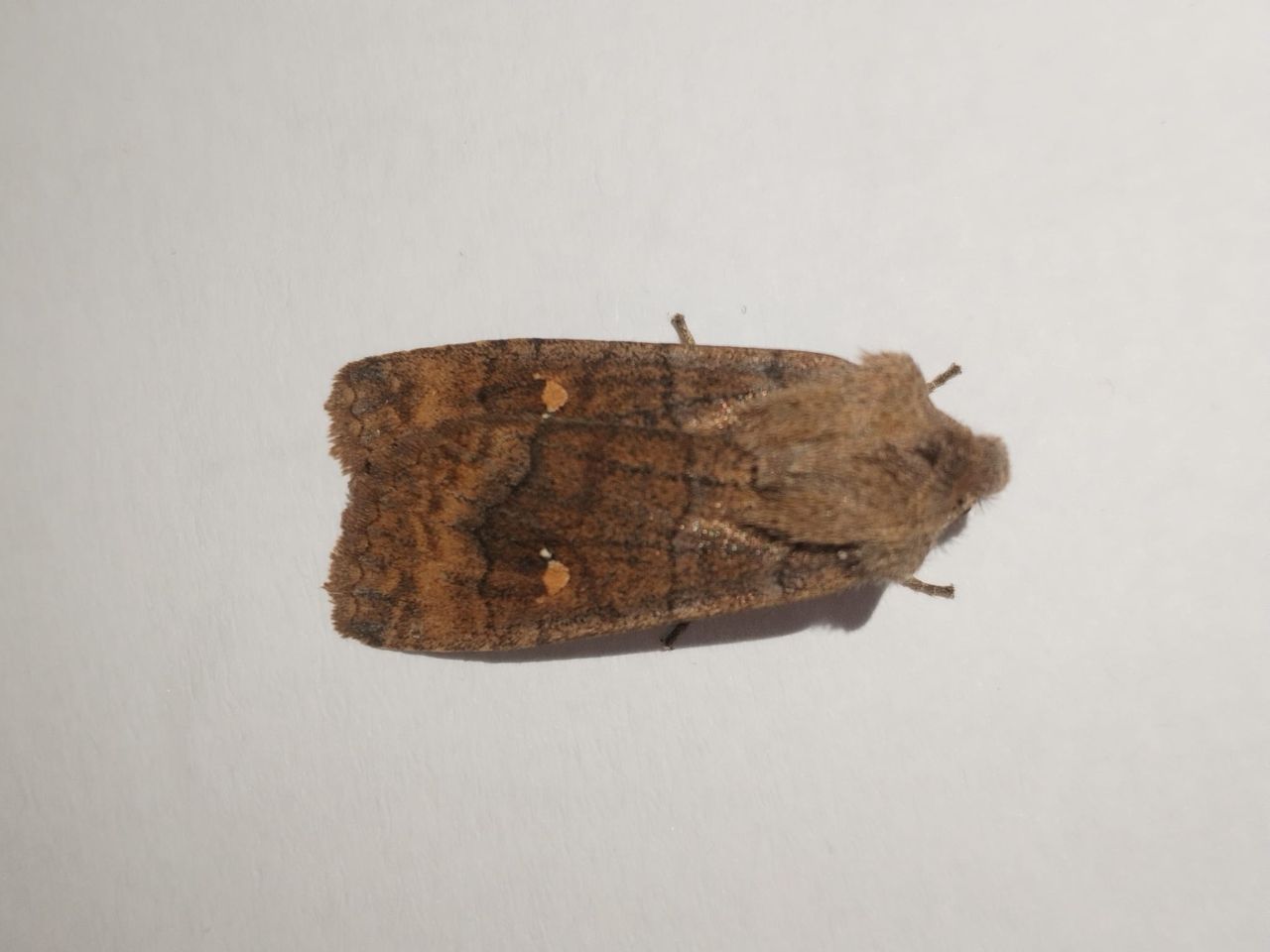
Eupsilia transversa/ Satellite/ Satelitugle
In the afternoon, when I came back from grocery shopping, Svend Aage and Henrik were at the station. The last days, a part of the station had been painted and the furniture was still in the middle of the rooms. They had started putting things back and I helped them. Now, everything is on its place – it is cozy again at the bird observatory!
People: Svend Aage, Henrik and Hanelie
Ready for the spring season!
Hello from Blåvand Fuglestation! I arrived on Monday evening at the station, a few days before the start of the season to help setting up the nets in the lighthouse garden which we took down over the winter end of the last season. On Tuesday morning, Bent came to the station and together, we set to work. We set up all of the standard nets in the lighthouse garden. Just the four nets at Krattet, which do not count to the standard nets were left, but we saw that some old trees were fallen in the net lines and left this work for today.
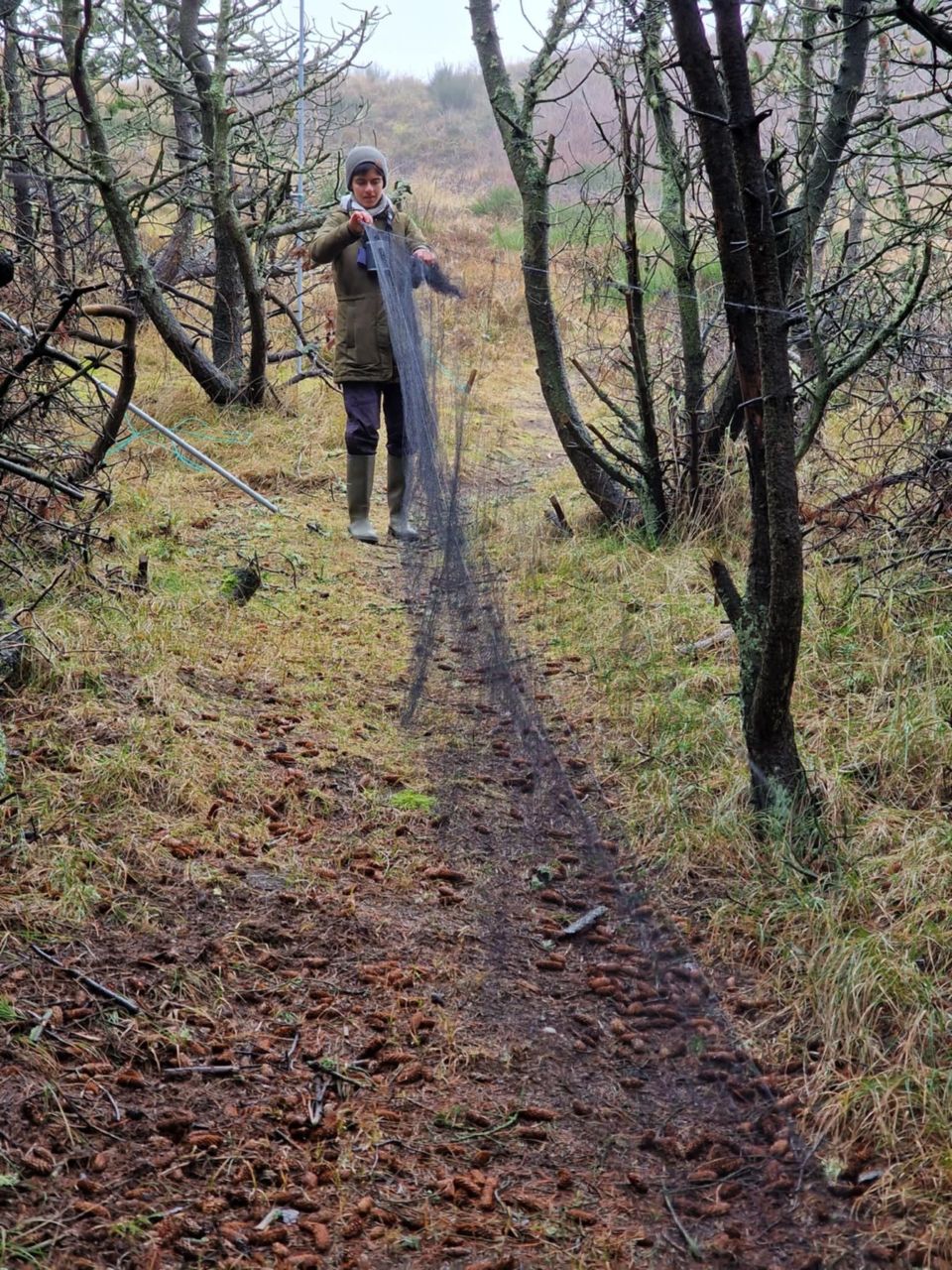
Me setting up a net.
So this morning, we sawed up the trees and took them away and set up the last nets. Bent had showed me a new knot to attach the rope on the pole the day before and although I do not remember dreaming of it all night, as Bent said, I remembered it very well this morning. Bent helped me to take out the moths trap from the station, I will again catch moths with UV light this spring.
It was very foggy yesterday and today the whole time. But the military area was open and I wanted to use that to go for a walk after Bent had left. There were some Wrens “Gærdesmutte” and Skylarks “Sanglærke” – the Skylarks are a great sign that spring is starting – but else it was rather quiet. I also went into some bunkers, last autumn I had discovered some moths resting there, the same species were still there, Scoliopteryx libatrix “Husmoderugle” and Alucita hexadactyla “Kaprifoliefjermøl”.
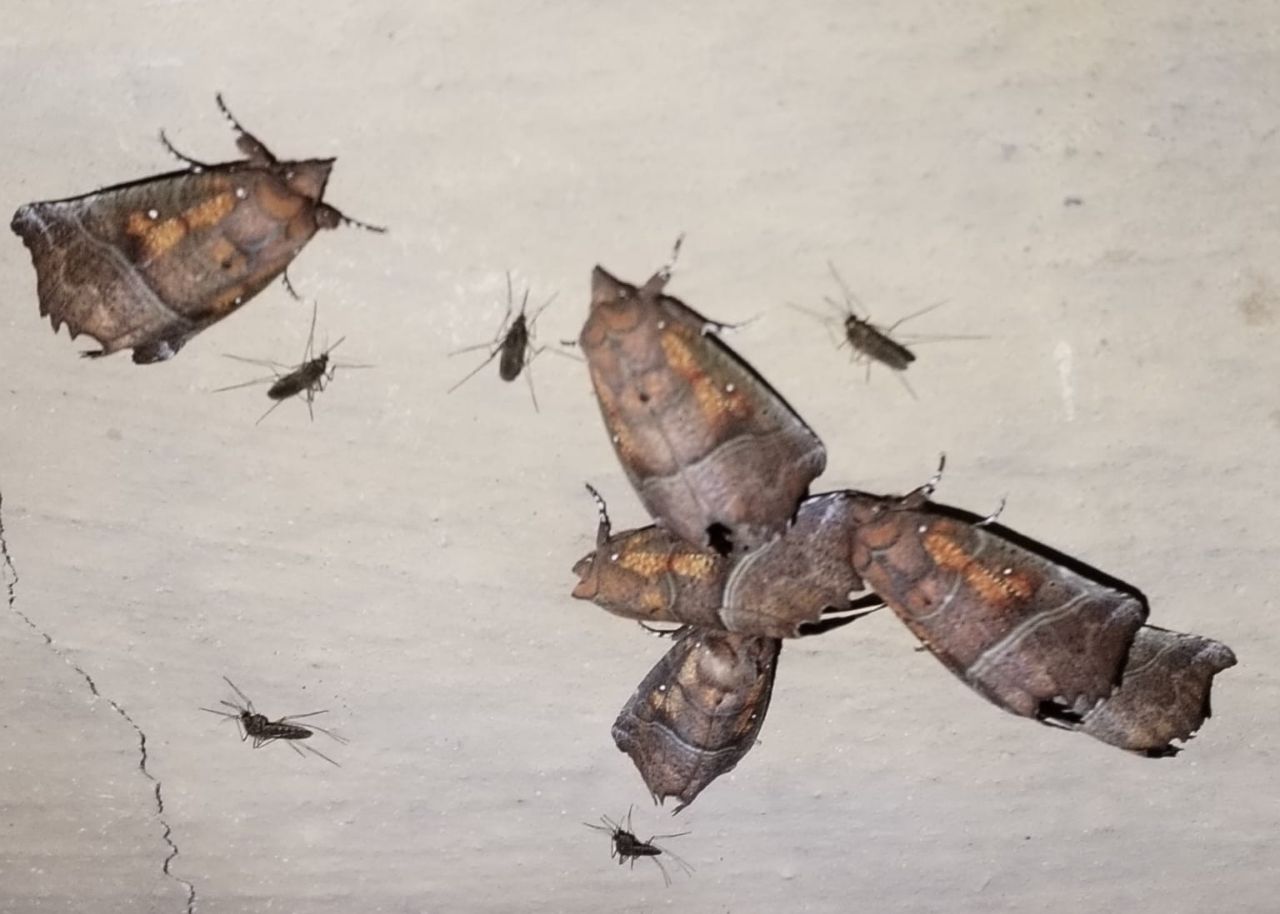
Scoliopteryx libatrix "Husmoderugle" and mosquitos in a bunker.
When I started thinking that it was not so fun to walk in the foggy soup, I found a bat in one of the bunkers which cheered me up. I was inside quite many bunkers, also last year quite late in the season and I was wondering, why I had not found any bats, so that one was a nice surprise.
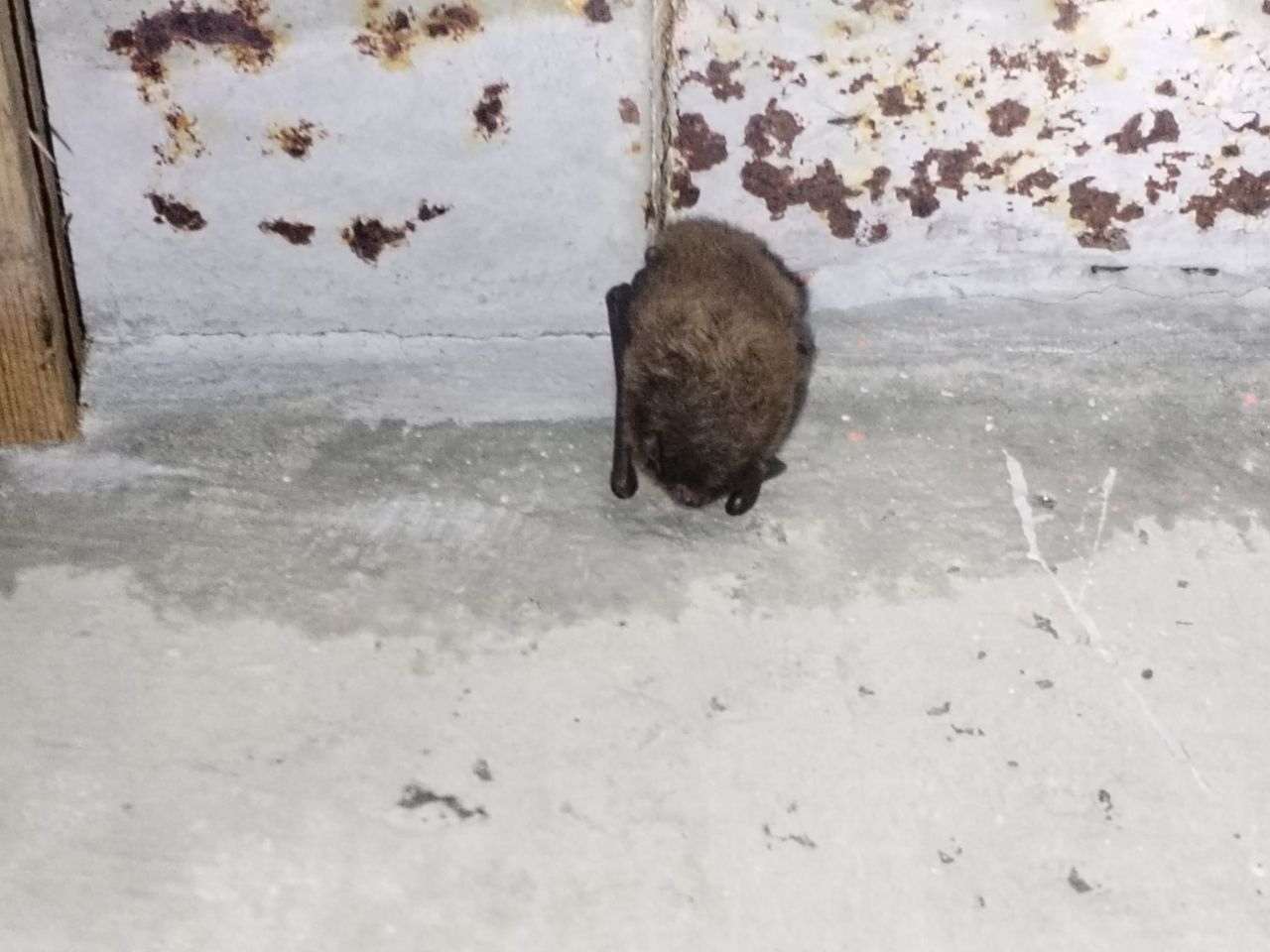
The bat.
Back from my walk, it was already afternoon but I opened the nets by the house just for two hours. It was not so bad, the Blackbirds “Solsort” are coming back, I had three new and one new Bluetit “Blåmejse”.

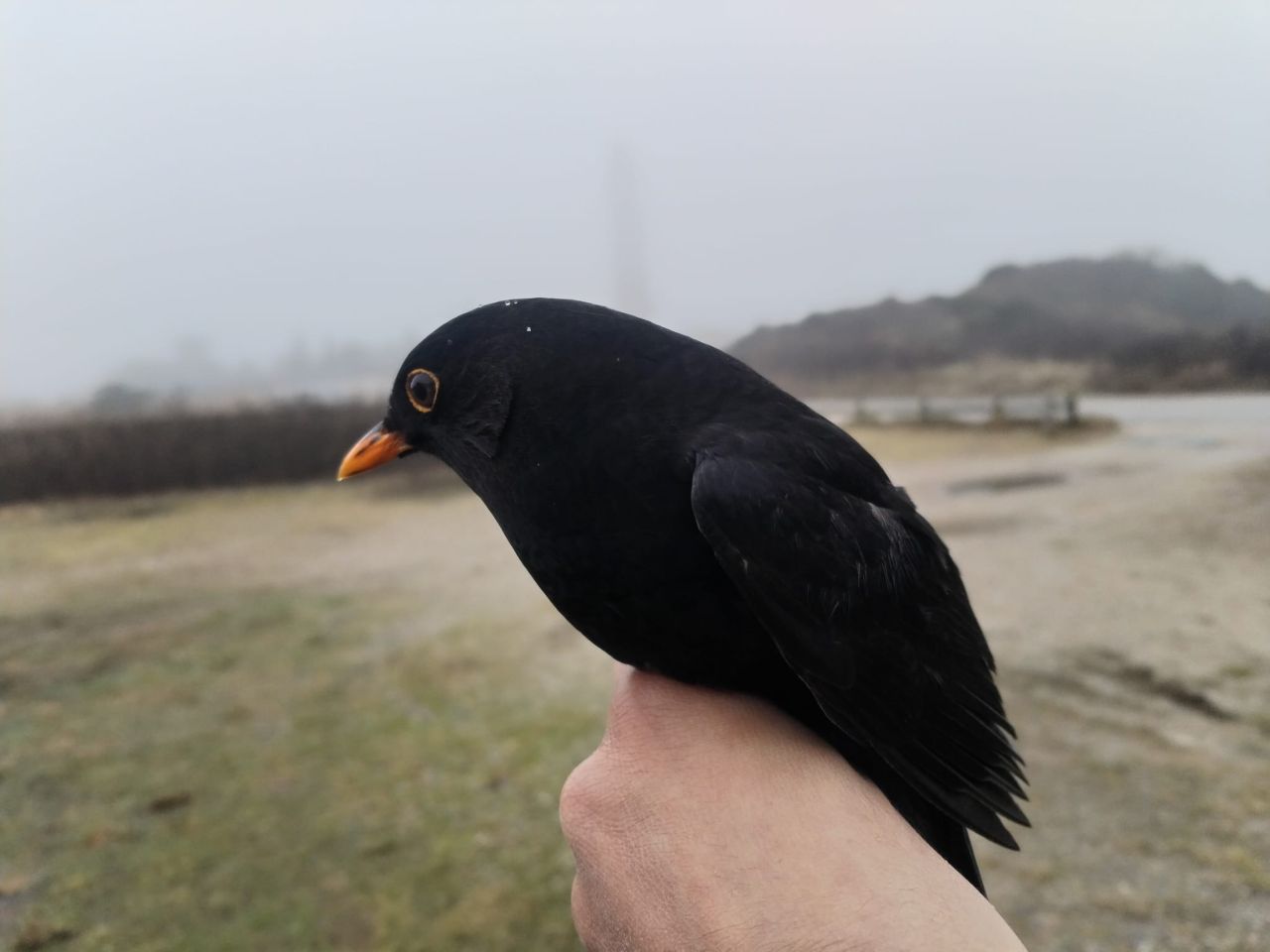
The Bluetit "Blåmejse" would give a more coulerful picture but I decided for the Blackbird "Solsort" as you can see how foggy it is on this picture. In the background is the lighthouse.
People: Bent Jakobsen, Hanelie Sidhu
A Brambling and a goodbye
When my alarm woke me up this morning, I heard the wind howling outside and from time to time, rain showers were drumming against my window. So, I enjoyed the warmth of my bed for a bit longer.
David went out to an unsatisfying morning obs with bad visibility and not much happening on the sea.
In the afternoon, I washed bird bags, cleaned the labs and a bit in the house.
The board of the bird observatory had a meeting at the station in the evening and this was also a good opportunity to say goodbye to everyone, as it was my last day today.
There were not many birds around, but I opened the nets while I was cleaning, wondering if I would get one last bird to ring.
Some birds went in the nets, mainly recaptures, worth mentioning of these a Dunnock “Jernspurv”, that was ringed by Philip in summer 2022. Its eye is already quite reddish by now. I do not use eye color for aging much and if just as additional characteristic, but in Dunnocks “Jernspurv” it is usually good to see how the eye turns from greyish in juveniles to more and more reddish the older they get.
There was one bird without ring that went in a net though, so probably my last ringing species for 2024 was a Brambling “Kvækerfinke”. A funny coincident and I needed to think back to the 15th of October, the day, when Chung-Chi, Torben and I suddenly stood in front of a net full of finches, but mainly Bramblings “Kvækerfinke”.
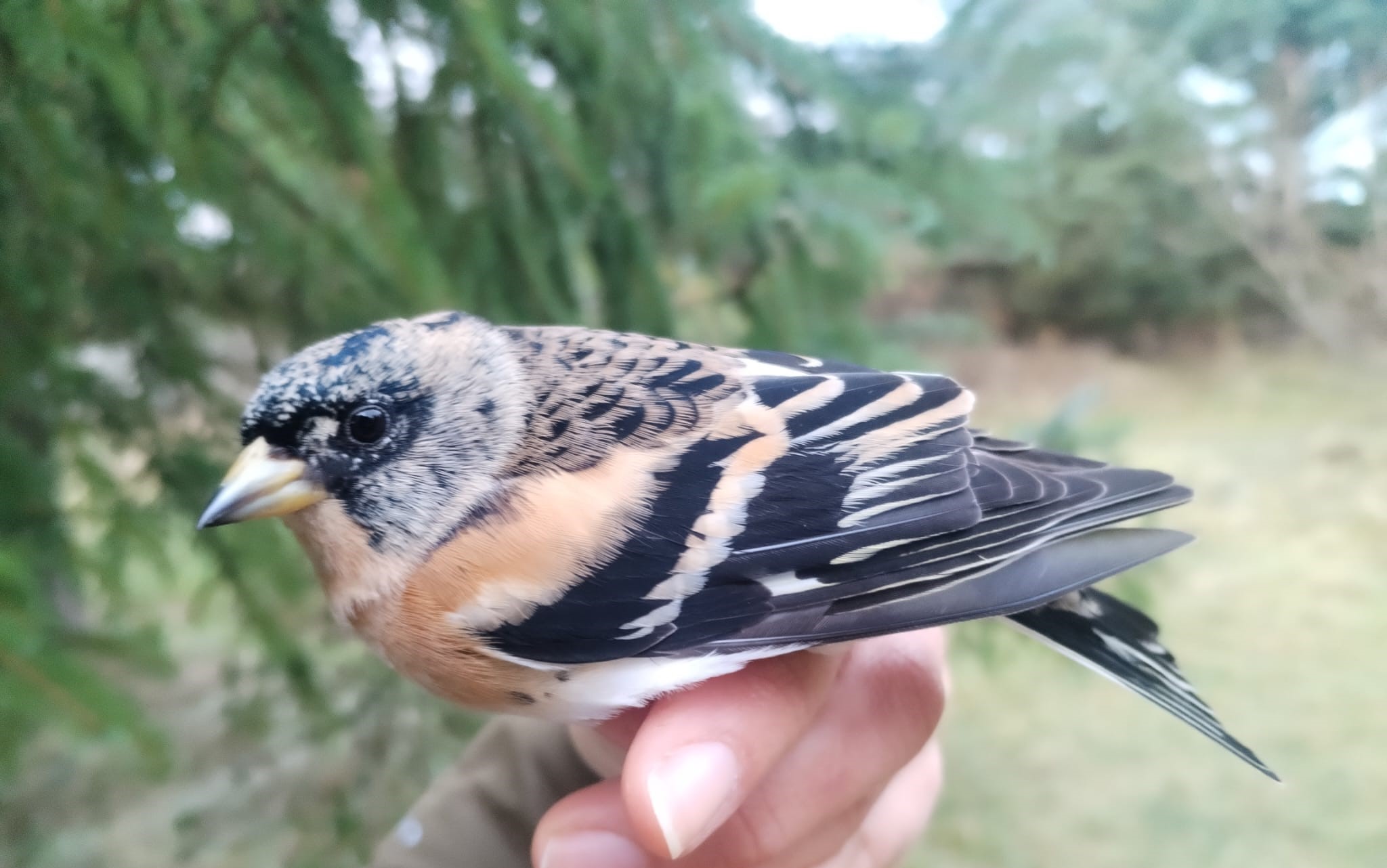
Brambling 2k+ male/ Kvækerfinke 2k+ han

It was a nice autumn at Blåvand, although for sure not the best season, numbers were low and rarities missing in the nets. Nevertheless, the season had highlights, I think for me the biggest was the Long-eared Owl “Skovhornugle” in the net. And the Woodcocks “Skovsneppe” were great, also the Ring-Ouzel “Ringdrossel” in week 42 and the resting little Auk “Søkonge” some days ago. And Blåvand has a great landscape to wonder around and to look for birds (and moths in bunkers, although I discovered that quite late ;)
So, it is time to say goodbye for now, but will for sure be back for ringing in Denmark and also in Blåvand.
Come good over the winter!
Greetings, Hanelie
At the station: David, Hanelie and Blåvandgruppen
Whooper Swans in a lake in the bog
Ringing:
Now it is 08:00 that the nets need to be open. 08:30 first round. I guess you would call that normal working time. For a ringer it sounds exceptionally late. It´s not bad, but I love the long Scandinavian summer days, although they mean getting up very early to open nets.
Sad is, that there are not so many birds in the nets. But yeah, it is winter. 1st of December today.
I ringed four new birds today and recaptured four as well. All new were Blackbirds “Solsort”, the recaptures mainly Great Tits “Musvit”. And one pretty 2k+ Chaffinch "Bogfinke". I just entered the data and saw; it was ringed here in spring 2022 by Timothy.

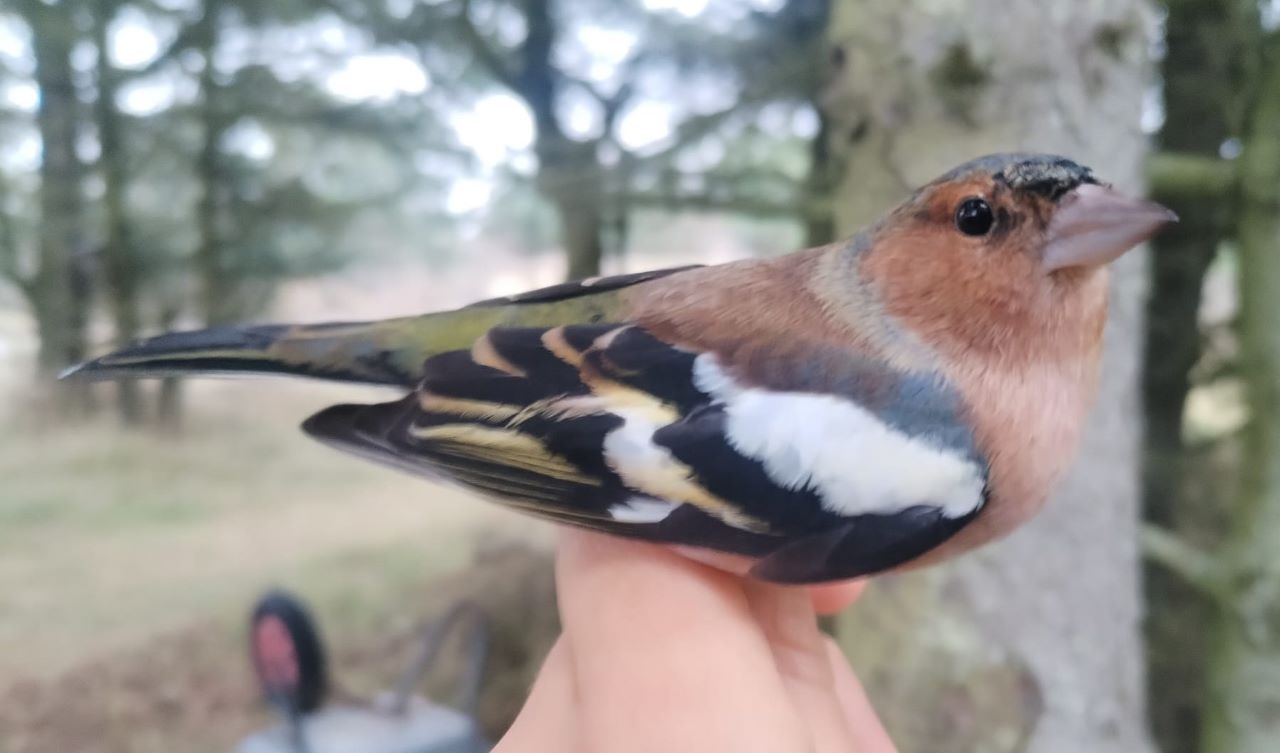
Chaffinch 2K+ male/ Bogfinke 2K+ han
While I was ringing, David and Henrik were out observing. It was a quiet day. 9 Caspian Gulls “Kaspisk Måge” were the highlights and a lot of Purple Sandpipers “Sortgrå Ryle” are still feeding on the beach.
Both Henrik and David as well as me, when I went to the beach later had some colour-ringed gulls.
I went to the bog after, further than my usual round and checked some more bunkers for moths. Again, I found Scoliopterix libatrix “Husmoderugle” and Alucita hexadactyla “Kaprifoliefjermøl”. There are not so many species wintering here in the bunkers. But read an article that more moth species might rest in bunkers or caves in the hot summer moth during the days. A reason to come back to check it out. And of course, the birds and landscape…
From the top of one of the bunkers, I could see far and also had my telescope with me. In one of the lakes further in the bog, there are Whoopersvans “Sangsvane” resting. And could observe the sunset.
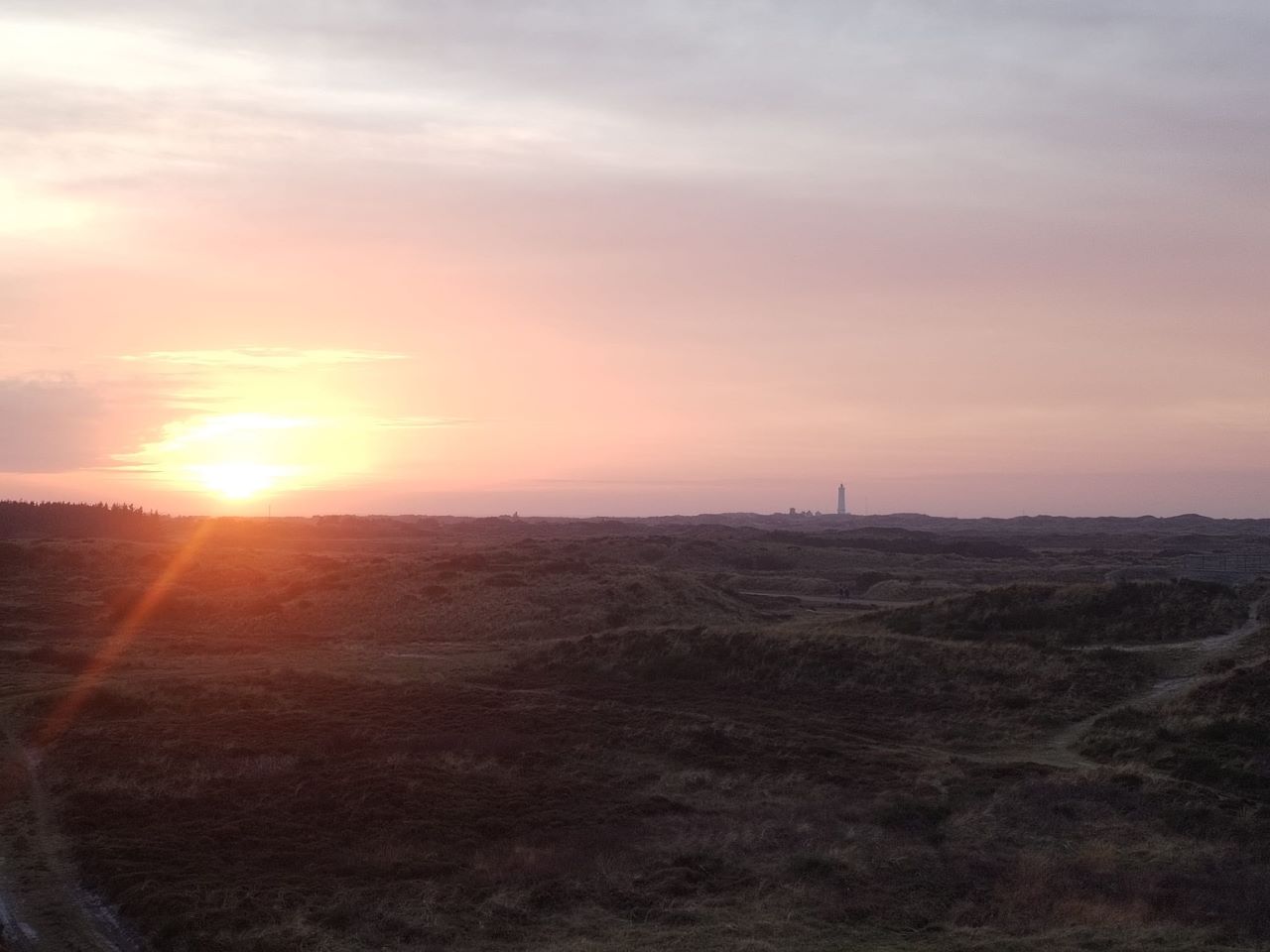
Sunset from the top of a bunker in the bog.
It was time to go back, the days are short. It was already rather dark, when I arrived at the station and the light show at the lighthouse had begun. Bent and his wife were at the station to see it and we had cake together.
People: Henrik, David, Hanelie, Bent and his wife.
Far henter søn
Vejr: S (170), 9,8 ms, 6,4 grd, 6:8, 5-10 km sigt
Det var sidste dag for Jonas i denne omgang, og vi fik derfor selskab af hans far Kurt Willumsen som kom for at hente knægten. Meeen man skal da være et skarn hvis man ikke bruger formiddagen på hukket/stranden inden hjemturen.
Der skal lyde en stor tak for indsatsen til Jonas.
Den kraftige søndenvind hjalp os ud på den daglige morgenobs. Forventningerne er skruet ned da vinteren i den grad nærmer sig, og det kan mærkes på fuglelivet, som helt naturligt aftager mere og mere. Temperaturen er dog stadig i det lunere hjørne årstiden taget i betragtning, hvilket bringer lidt håb om, at der kan dukke noget op.
Vi havde ikke siddet derude længe før en Mosehornugle kom indtrækkende, og landede i den nordlige klitrække, efterfulgt af 2 krager som ikke veg blikket fra den.
Trækket er jo nærmest ikke eksisterende længere, så fokus falder ofte på rastende måger hvilket resulteret i 5 Kaspiske måger. Derudover kunne synet af 410 rastende Sandløbere og 56 Sortgrå Ryler nydes.
Kurt havde også fornøjelsen af en rastende Søkonge som lå på vandet.
Personligt var jeg kun ude den første time, da der i Blåvandsgruppen var planlagt en arbejdsdag, hvilket bestod i oprydning både af selve fuglestationen, skuret samt diskussioner og nye ideer til indretning osv osv.
Der blev gået til den i 3-4 timer, hvor 2 trailere blev fyldt og kørt på lossepladsen.
Dejligt at få ryddet ud og op i tingene på stationen!
Arbejdsdagen blev selvfølgelig afsluttet med en frokost med alt hvad hjertet begærer, undtagen nogle meget få ting. Det kan I jo selv overveje, hvad det så er…
En hurtig aftentur i mosen blev det også til, i kapløb med det sidste aftenlys.
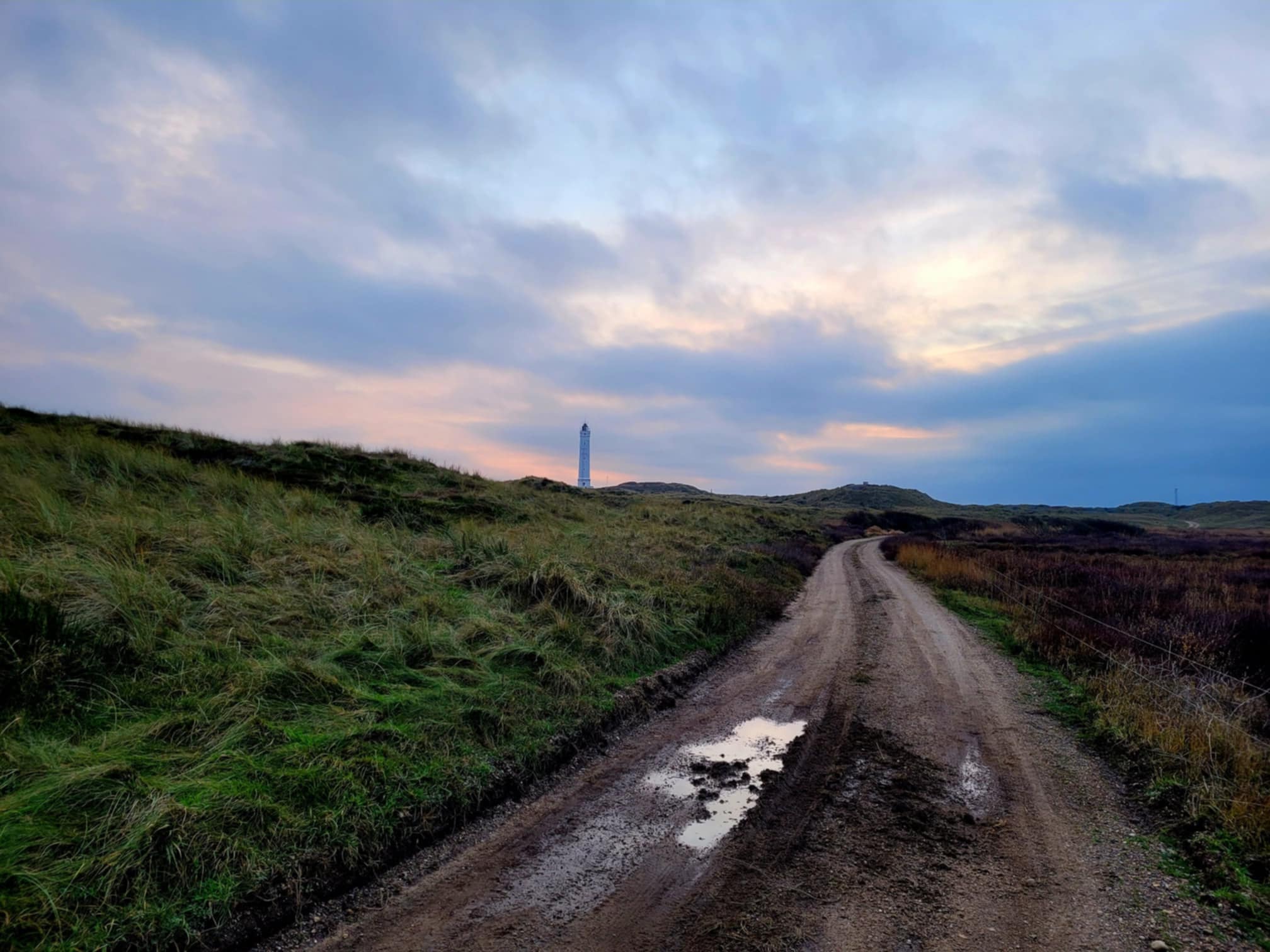
//DMa
Bunker biodiversity
As all the last mornings (when ringing was possible) Jonas and I opened one garden each. But today, Jonas left to one last morning obs while I stayed in the gardens.
There was not much going on on the sea...
Also in the gardens it was rather quiet. I ringed five new Blackbirds and recaptured two.
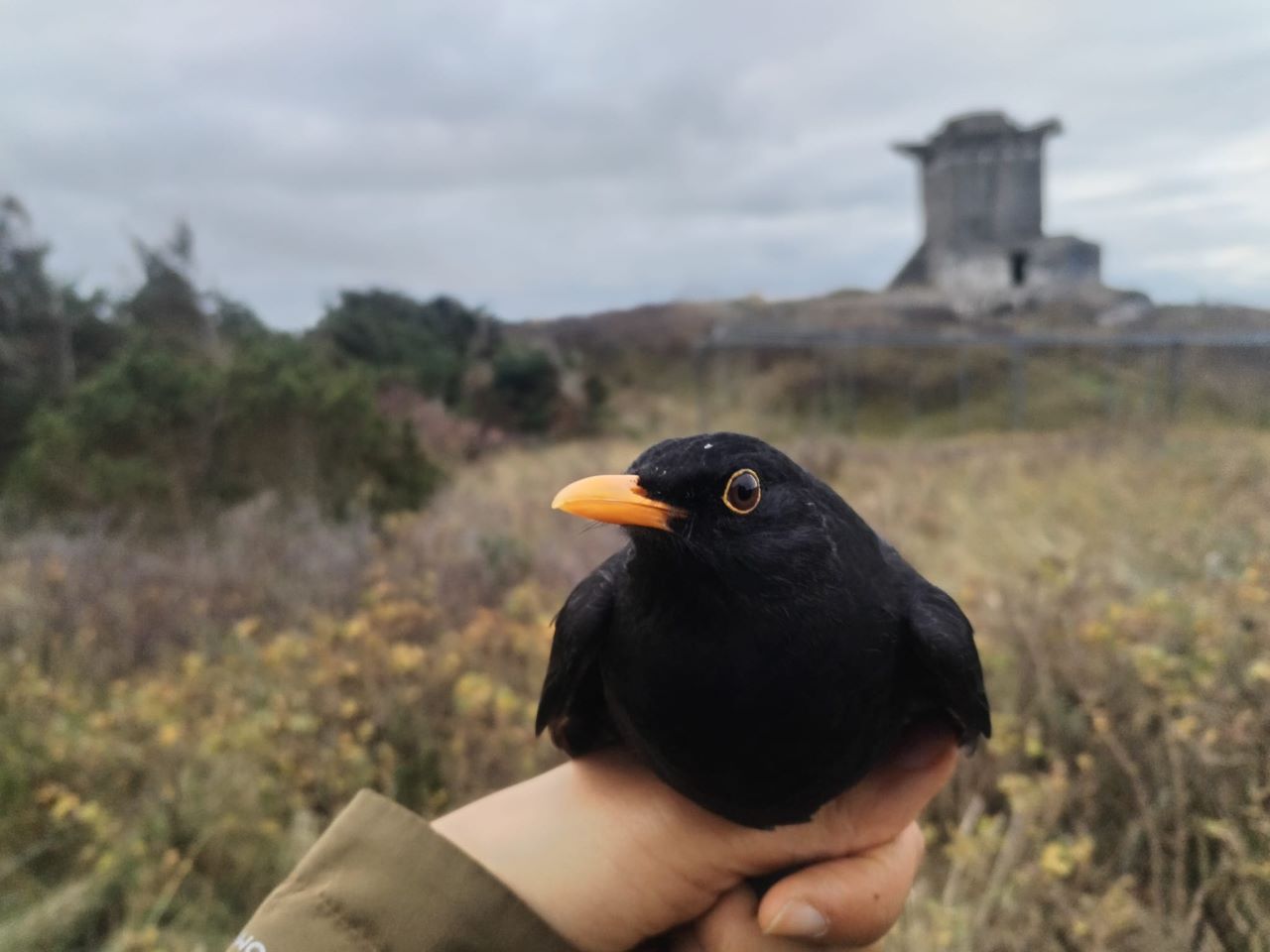
A pretty 2K+ male

After the nets in the station garden were closed, we went to the lighthouse garden to put the nets down over winter... We were quite fast and effective. The nets in the station garden will probably stay during winter, Bent will do some work here and ring a bit.
After all work was done, we were quite curios about the inside of the bunker which you can see in the background of most bird pictures that are taken in the lighthouse garden.There is not so much that you can access, but I made an interesting discouvery: Besides mosquitos and spiders, there were many moth in the bunker. Just two species though, Alucita hexadactyla "Kaprifoliefjermøl" and Scoliopterix libatrix "Husmoderugle". The latter was new for me.
Now I got curios and wanted to explore some more Bunkers. I took three that are on the way through the bog to Sabine bunker.
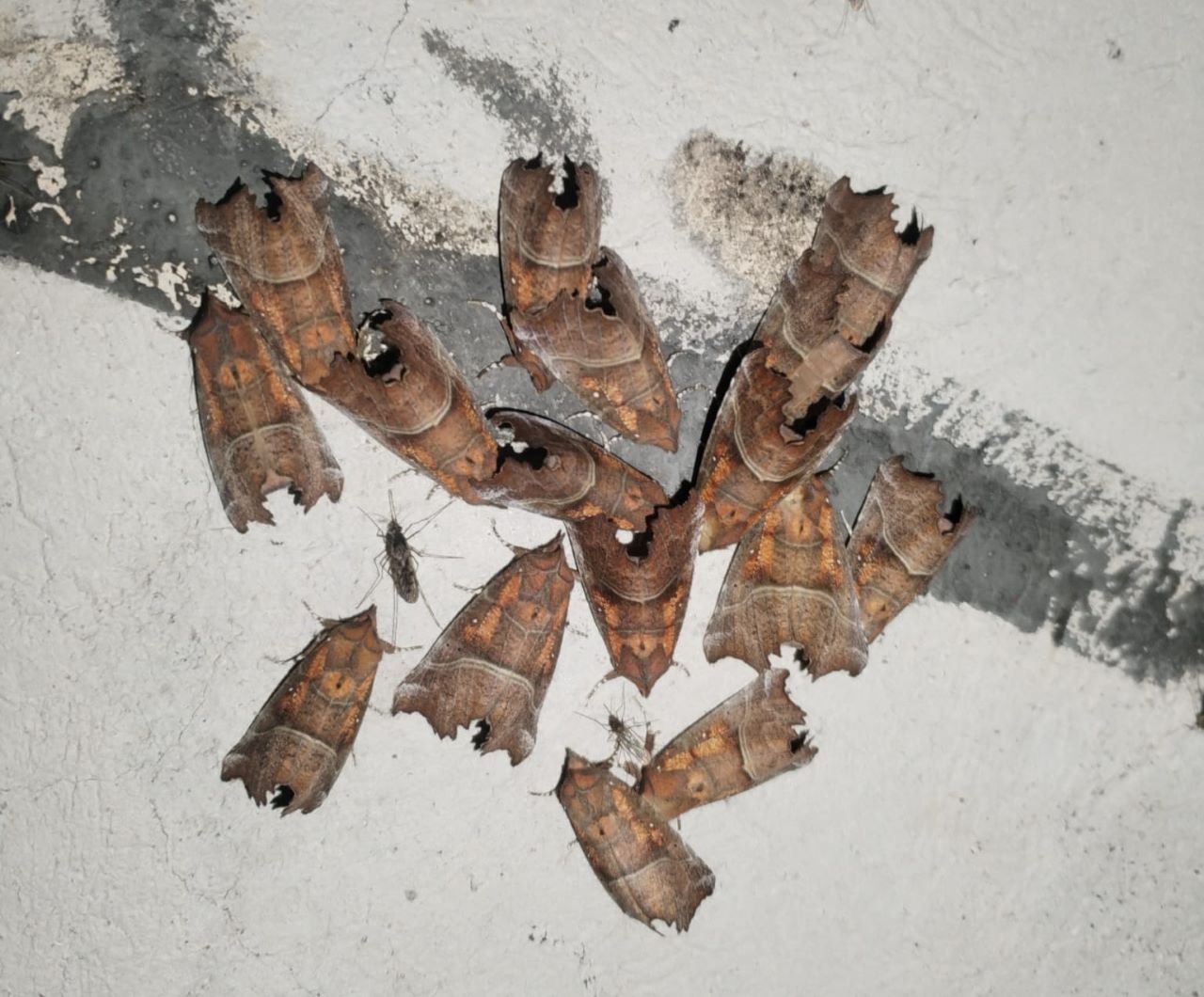
Scoliopterix libatrix "Husmoderugle" on the bunker wall.
And was amazed how many moth I found. But it remained just these two species.
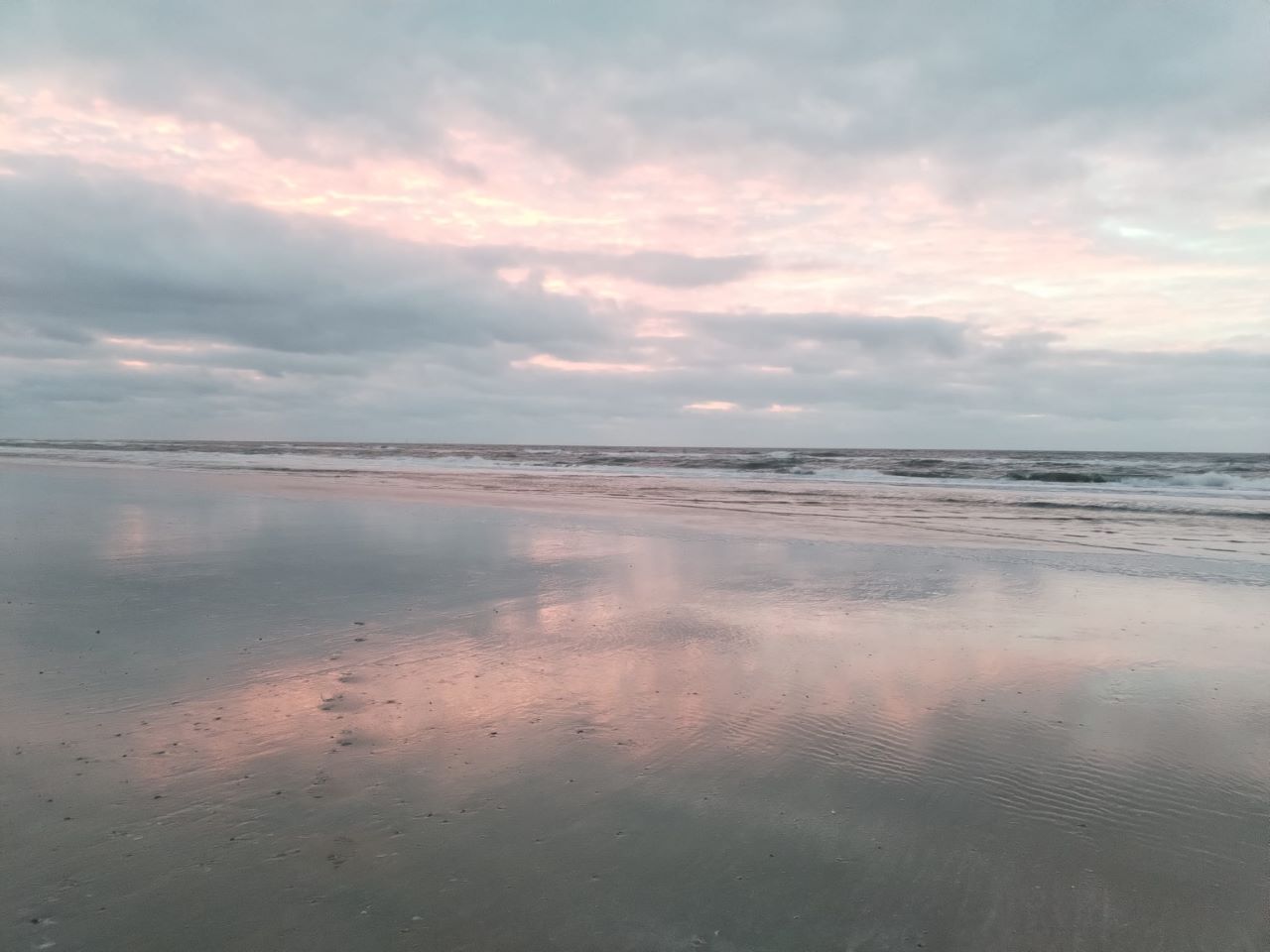
The reflection of the clouds at sunset on my walk back at the beach was quite beautiful.
At the station: Jonas, Hanelie
En and..
Observations:
Sidste blog indlæg fra min side af, her i denne omgang…
Det blev en meget stille, men igen fin morgen på hukket.
Jeg startede ud med at gå på nordhukket, hvor der stod rigtig mange måger, men udelukkende Sølvmåger.. og dårlig læ i den 9 sekund meters vind fra N..
Så jeg rykkede hurtigt videre til sydhukket, hvor Jonas og Hanelie kort efter også sluttede sig til.
Der var virkelig stille trækmæssigt, faktisk skete der næsten ikke noget..
Der kom et par enkelte Rider og én Sule..
Der var mange Sortænder der bevægede sig nordpå, indimellem lettede nogle rigtig store flokke og fløj nordpå, og der var samtidigt et konstant flow af små flokke. Over 11 tusinde fløj nord på, men senere kom mange også tilbage igen…
Sydhuks obs / Foto: Jonas
Ved halv elleve tiden meldte Henrik at der lå en sjov Fløjlsand nede ud for “ishuset”, så da der alligevel ikke skete noget over havet skyndte vi os ned mod Henrik og anden.
Der gik lidt tid før vi fik den at se da den dykkede meget, men pludselig var den der, og vi fik se den nogenlunde godt. De lå sådan set ret tæt på ænderne, men der mange små bølger, som besværliggjorde obsen.
Hvilken and der er tale om, bliver der stadig talt om, så det må i lige vente at se… men det er enten en Fløjlsand, Sibirisk fløjlsand eller en Amerikansk FLøjlsand eller et sted der imellem…
Men i får et billede af den her..
Fløjlsand sp. / Foto: Henrik
Peace out’’
Folk på stationen: Louis, Jonas, Hanelie, Henrik
Some flocks of finches in the air
Observations:
En super flot, stille og rolig morgen, men aldrig så stille at det blev kedeligt ligefrem.
Over havet skete der meget tæt på ingenting.. i løbet af hele morgenen så jeg f.eks 30 Sortænder, hvilket siger lidt om det. Der kom faktisk flere lommer end Sortænder med 46 stks.
Og det var også blandt lommerne at dagens fugl skulle findes.. en Islom, en flot fugl som kom højt som de ofte gør og på en rigtig behagelig afstand.
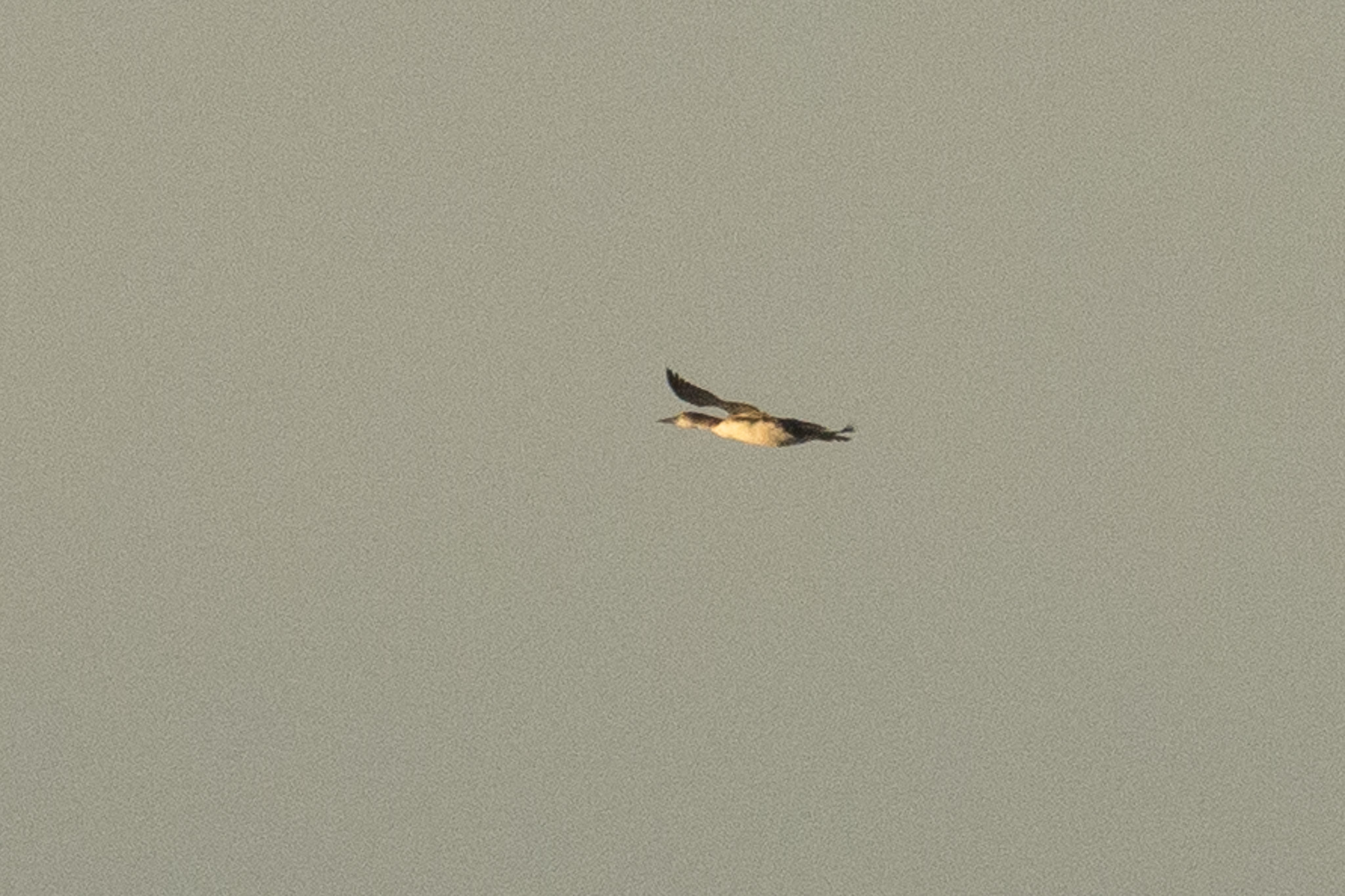 Islom ..og ja altså i forhold til hvor dårligt de kan komme, kom den godt.. / Foto: Louis
Islom ..og ja altså i forhold til hvor dårligt de kan komme, kom den godt.. / Foto: Louis
Der var også lidt småfugle i luften, det så ikke særlig “seriøst” ud, det virkede som de bare fløj lidt rundt, men det var da fint at der var lidt liv deroppe..
Der kom bla. 12 skønne Bjerglærker i blandt..
På stranden var der godt med vadefugle gennem hele morgenen, og de stille perioder kunne man jo så bruge på at optælle stranden. Jeg talte hele 670 Sandløbere, jeg talte dem rent faktisk i é’nere to gange og endte på 670 begge gange, 94 Strandskader, hele 35 Sortgrå ryler, 20 Stenvendere og 20 Almindelige ryler! Det var fedt at se sådan et helt “bånd” af Sandløbere der løb frem og tilbage i strandkanten når bølger kom op, og når de fløj rundt og nærmest dannede en mini hvid sol, eller ja, altså.. ..næsten…
Bent rundede også obsen, og havde medbragt kage på stationen, som en afrundingskage for sæsonen, da det efterhånden lakker mod enden.. jeg tager afsted i morgen, og Jonas og Hanelie bliver nogle ekstra dage.
Ringing:
Finally, a day with very low wind and we could open the nets again. It was more than expected in the first rounds.
Most birds were caught in the station garden, and we had a lot of Greenfinches “Grønirisk” today, a species that was here in big numbers just about 15 years ago, but because of an illness, the population declined a lot. Now, it is definitely a bit special to get them in the nets, just 20 were ringed during this year’s whole autumn season, eight of them today.
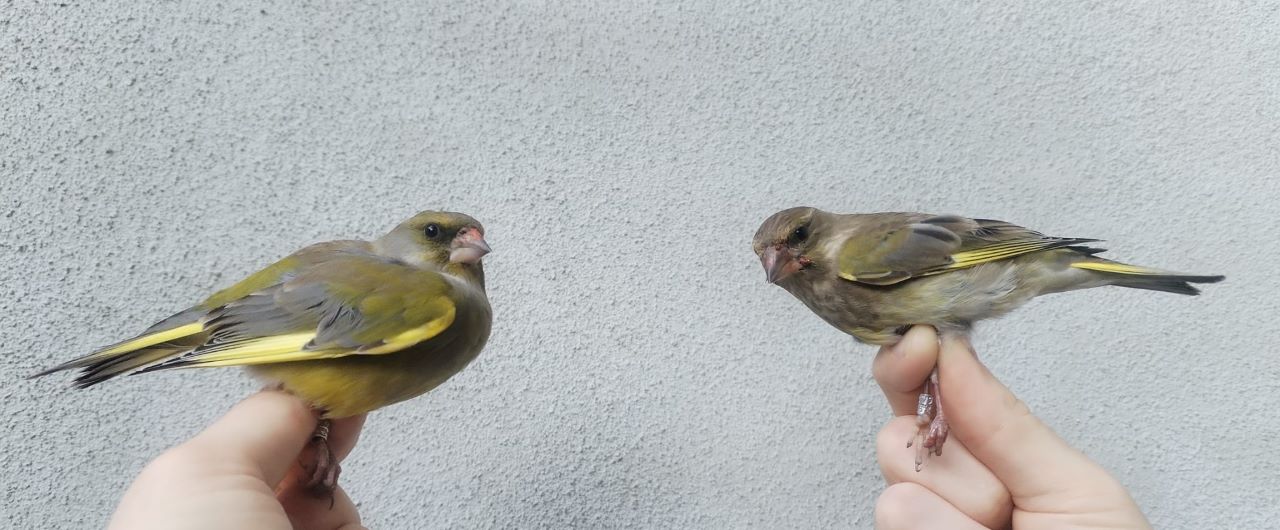
Greenfinch male and female/ Grønirisk han og hun
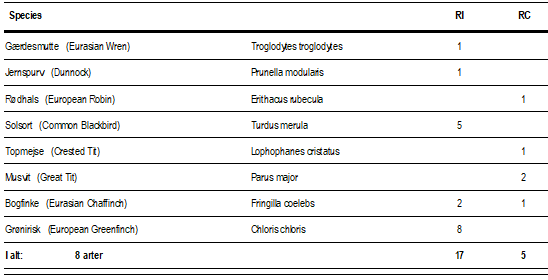
At the station: Louis, Hanelie, Jonas, Bent, Torben
